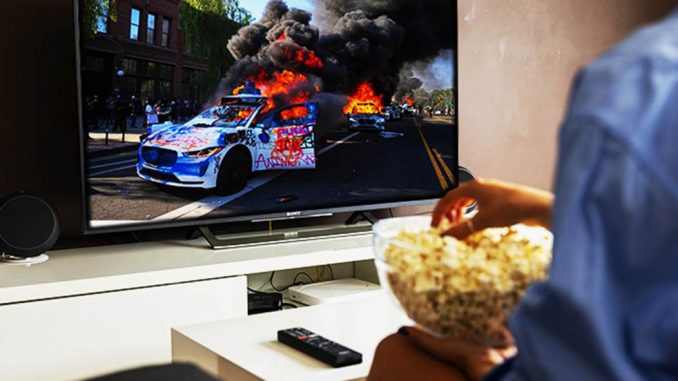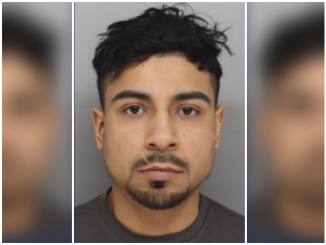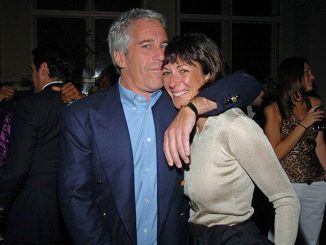
| Published June 12, 2025
amid protests in Los Angeles against federal immigration enforcement, an unexpected twist captured national attention: a man reportedly distributing advanced face shields—dubbed “Bionic Shield”—to demonstrators was arrested by the FBI. The incident, part of broader unrest that sparked a federal crackdown, highlights a new dimension in civic disorder: the logistical support systems behind organized demonstrations.
The Arrest That Made Headlines
-
The man apprehended
The FBI arrested Alejandro Theodoro Orellana (age not disclosed), charging him with conspiracy to commit civil disorder under 18 U.S.C § 371. U.S. Attorney Bill Essayli emphasized authorities are moving swiftly to dismantle not only overt acts but also the networks enabling unrest. -
The moment of arrest
Video footage, originally aired by Fox11 and highlighted via social media, shows demonstrators rushing toward a truck marked with “Bionic Shield” as Orellana allegedly distributed masks to protect against tear gas or crowd control measures.
“Bionic Shield”: Tactical Gear in Civil Unrest
-
Organized gear distribution
The masks, reportedly costing around $60 each, were delivered in “boxes and boxes,” according to Newsweek, indicating a coordinated effort rather than spontaneous assistance. -
Tools or weapons?
Critics argue even simple protective gear like face shields can enable more aggressive tactics, allowing rioters to approach police lines without risk of harm. This led federal prosecutors to classify the distribution as aiding civil disorder.
Federal Response and Escalation
-
Charged disruption
U.S. Attorney Essayli stated the FBI’s targets include not only mask distributors but any individuals “organizing, supporting, funding, or facilitating these riots”—suggesting a broader enforcement strategy beyond street arrests -
Bounty on violent actors
Separately, the FBI offered a $50,000 reward for leads on a masked assailant involved in rock attacks on federal officers during anti-ICE riots near federal detention centers. That violence prompted deployment of 2,000 National Guard troops.
Context: Violent Unrest and ICE Enforcement
-
Riot flare-ups
Protests escalated into confrontations in Los Angeles and San Francisco, with vehicles set ablaze, Molotov cocktails thrown, and officers injured—seen as part of an intensifying reaction to immigration enforcement policies. -
ICE and DOJ involvement
In parallel, ICE arrested at least one undocumented individual caught on video attacking law enforcement with a Molotov cocktail. The DOJ promised prosecution “to the fullest extent” for those who assaulted officers or incited violence.
Behind the Gear: Funding and Orchestration
-
Tracing the logistics
RedState’s coverage speculated that such organized distribution of protective equipment implies financial backing. Orellana is seen as a “foot soldier”—a potential gateway to identifying the broader network funding and orchestrating the unrest. -
Search for sources
Federal agents reportedly executed a search warrant on Orellana’s property, a tactic aimed at uncovering communications, financial records, or contacts that might reveal higher-level coordination. .
Visual and Video Evidence
-
Captured footage
Fox11’s local news shared footage of protesters scrambling toward a truck to equip themselves with face shields—referred to online as “bionic shields”—underscoring the scale of the operation.
Alejandro Theodoro Orellana was arrested this morning by the FBI in Los Angeles.
Potential outside agitators handing out PPE face shields and water to rioters in Los Angeles.FOX11
He faces a charge of conspiracy to commit civil disorders.FOX11
Here are the implications of the arrest of Alejandro Theodoro Orellana and the broader situation surrounding the distribution of protest gear during recent civil unrest:
⚖️ 1. Expanded Legal Reach on Civil Disorder
The use of conspiracy to commit civil disorder charges signals a wider application of federal laws. This allows prosecutors not just to target those who engage in violence, but also those who provide logistical or material support, even if indirectly. It could set a precedent for charging individuals distributing protective equipment, raising questions about the legal limits of protest support.
🛑 2. Chilling Effect on Protest Logistics
This arrest may deter future activists, volunteers, or groups from supplying gear like masks, goggles, or first-aid kits—even when intended for peaceful purposes—due to fear of prosecution. The line between aiding protesters and abetting criminal behavior is becoming more ambiguous in the eyes of law enforcement.
🧠 3. Increased Government Surveillance of Protest Infrastructure
The investigation into Orellana’s activities likely includes digital surveillance, financial tracking, and network mapping. This reflects a growing federal emphasis on not just the visible actors in a protest, but also those working behind the scenes—potentially including medics, drivers, or tech support.
🧨 4. Escalation of Federal and Local Tensions
The federal response, including National Guard deployment and aggressive prosecutions, may fuel further conflict between local communities and the federal government. Some city officials in protest-affected areas may push back against DOJ strategies, accusing them of criminalizing dissent.
💬 5. Polarized Public and Political Response
Depending on one’s political viewpoint, this incident will be interpreted either as a necessary law enforcement action against organized rioters or as an overreach into civil liberties. The divide in media narratives—between conservative outlets highlighting coordination and left-leaning voices warning of repression—could deepen national polarization over protest rights.
🧾 Overall Takeaway
The arrest of Alejandro Orellana for allegedly distributing protective masks during violent protests marks a significant shift in how federal authorities approach civil unrest—focusing not just on frontline participants but also on those enabling activity behind the scenes. It underscores a growing legal and political debate over where the line lies between protest support and criminal facilitation. As tensions rise over immigration policy and public demonstrations, this case could influence how future protests are organized, policed, and prosecuted across the United States.
SOURCES: REDSTATE – Busted! Man Wanted for Handing Out Masks to Rioters Arrested by FBI
NEWSWEEK – Mysterious Riot Gear Handed Out to LA Protesters Raises Questions
THE NEW YORK POST – FBI busts alleged LA riot leader who was filmed helping to distribute ‘Bionic Shield’ face masks to protesters







